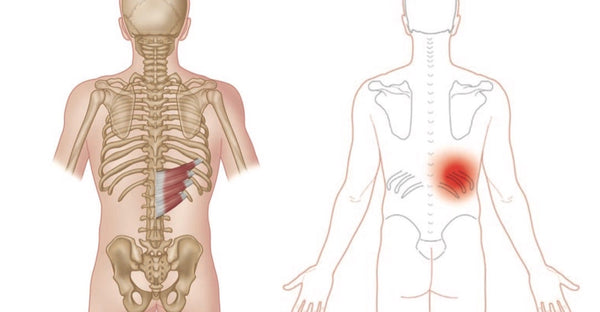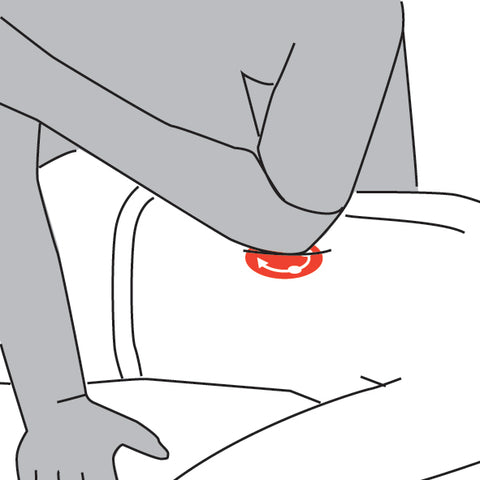Posted by Judith Winer on Dec 01, 2016

Trigger points in serratus posterior inferior may cause an uncommon local ache radiating over and around the muscle
Serratus Posterior Inferior is an often overlooked cause of lower back pain.
This muscle may be primarily a muscle of proprioception but it's important to remember that it also acts as a supporting structure for the lower back, stabilizing the four lower ribs and assisting in pulling them down and back.
The importance of the serratus posterior inferior is often forgotten and tightness and trigger points tend to be overlooked.
Kinetics
The serratus posterior inferior works in conjunction with the ilicostalis, longissimus thoracis, and quadratus lumborum.
It may also work with the serratus posterior superior as a spinal stretch receptor system or kinesiological monitor (Vilensky et al. 2001).

Serratus Posterior Inferior - trigger points and tightness in this muscle tend to be overlooked
Trigger Points
Trigger points in the serratus posterior inferior may cause an uncommon local ache radiating over and around the muscle.
This may extend across the back and over the lower ribs, even continuing through the chest to the front of the body.
This discomfort is typically described by clients as a nagging ache.
In many cases this pain will remains after other trigger points have been inactivated. This should be a good indicator for the therapist to recheck the serratus posterior inferior for undiscovered trigger points.
Indicators and Perpetuating Factors
These Trigger points are usually initiated by acute back strain in conjunction with the strain of other muscles in the region.
Perpetuating factors include paradoxical breathing, sagging and unsupportive mattresses (e.g. sleeping on a sofa or water bed), chairs with insufficient lumbar support, body asymmetry, and herpes zoster infections.
General Advice for Patients
Control perpetuating factors. Have the trigger points addressed by a therapist. The use of pressure tools such as the Backnobber are terrific for myofascial release self-help. Stretching and muscle energy techniques (see below).
Stretching
Cross your forearms just above the wrist, at about chest height. Inhale deeply as you slowly raise them up until the area where the arms cross is level with your forehead. Now lower the arms as you exhale.
Do this once or twice, allowing for a brief rest (a few breaths) before repeating. Do this exercise set several times a day.
Комментариев нет:
Отправить комментарий